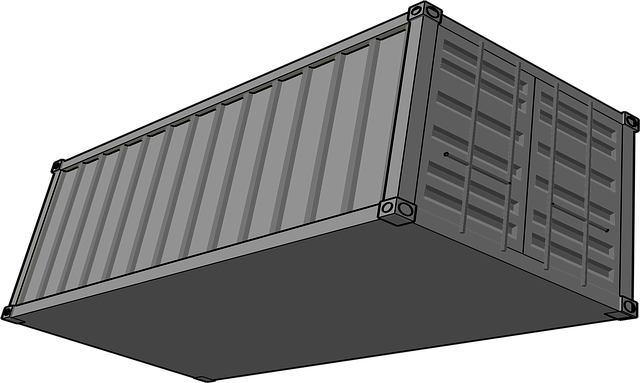“Looking to register your car in California? Our step-by-step guide simplifies the process. First, understand the state’s registration requirements, including necessary documents like proof of insurance and ownership. Gather these and visit a local DMV or utilize online services for convenience. Accurately verify your Vehicle Identification Number (VIN) using a trusted dmv vin verifier to ensure authenticity. Complete the registration application form, submitting all required documentation. Make the process seamless with our expert advice.”
- Understand California Car Registration Requirements
- Gather Necessary Documents for Car Registration
- Visit Your Local DMV Office or Use Online Services
- Verify Vehicle Identification Number (VIN) Accurately
- Complete and Submit the Registration Application Form
Understand California Car Registration Requirements

Before registering your car in California, it’s crucial to understand the state’s specific requirements. The California Department of Motor Vehicles (DMV) mandates that all vehicles operating within the state be properly registered and have passed a recent safety inspection. This involves verifying the Vehicle Identification Number (VIN) to ensure the vehicle’s authenticity and history, which can be efficiently accomplished through a mobile vin verification or vin inspection.
The process typically requires gathering essential documents, including proof of ownership, valid insurance, and sometimes, additional forms depending on your vehicle’s age and previous registration status. A key step is ensuring the VIN is accurate and matchable with the vehicle’s make, model, and year, which can be cross-checked using a mobile vin verifier. This ensures that both the physical car and its documentation align, adhering to California’s strict regulations.
Gather Necessary Documents for Car Registration

Before you begin the registration process, make sure you have all the required documents. The California Department of Motor Vehicles (DMV) will need several key pieces of information and items for a successful car registration. One crucial document is the Vehicle Identification Number (VIN) verifier, which can be obtained through a mobile vin verifier or by conducting a vin inspection. This unique identifier ensures that your vehicle matches the records and is essential for legal registration.
Additionally, you’ll require valid identification documents such as a driver’s license or passport, proof of insurance, and the title or register of ownership if applicable. It’s always best to check with your local DMV office for an exhaustive list of requirements, as some additional paperwork might be needed based on your specific circumstances.
Visit Your Local DMV Office or Use Online Services

Visiting your local DMV office or utilizing online services is the first step in registering your car in California. If you prefer a more traditional approach, scheduling an appointment at your nearest Department of Motor Vehicles (DMV) location is recommended. There, you’ll need to bring essential documents like proof of ownership and identification. Alternatively, California’s DMV offers a range of online tools for a more convenient experience. You can start the registration process online by providing details such as your vehicle’s make, model, and year, along with your personal information.
For added convenience, consider using a mobile vin verification service or a vin inspection tool to ensure your vehicle’s identity is accurately confirmed. This step is crucial in ensuring a smooth registration experience, especially when dealing with potential issues related to the Vehicle Identification Number (VIN). By combining in-person visits and online services, you can efficiently navigate California’s car registration process.
Verify Vehicle Identification Number (VIN) Accurately

When preparing to register your car in California, one of the crucial steps is ensuring your Vehicle Identification Number (VIN) is accurate. This unique 17-character code is essential for identifying your vehicle and verifying its history. It’s recommended to use a reliable DMV VIN verifier or mobile VIN inspection tool to cross-check the number before proceeding with registration.
Accurate verification can help prevent issues later on, such as discrepancies in vehicle history reports. With a simple mobile vin inspection, you can easily double-check that your VIN is correct, ensuring a smooth car registration process in California.
Complete and Submit the Registration Application Form

To initiate the registration process for your vehicle in California, start by obtaining a Vehicle Registration Application Form from the DMV or downloading it from their official website. This form requires detailed information about your car, including its make, model, year, and unique identification number (VIN). It’s crucial to ensure the VIN is accurate, as the DMV uses this to verify the vehicle’s history through a process known as a VIN inspection or check. You can utilize the DMV’s online tools or a mobile vin inspection service to facilitate this step, ensuring your car’s details are authentic and up-to-date.
Fill out the form completely, providing all necessary data. Include your personal information, vehicle specifications, and any associated fees. Once completed, submit the application along with the required documents and fees to the DMV. They will process your request, conduct a vin inspection if needed, and issue a registration certificate for your vehicle upon approval.
Registering a car in California is a straightforward process, but understanding the requirements and gathering the right documents are essential. By visiting your local DMV office or using online services, you can efficiently complete the registration. Remember to verify the Vehicle Identification Number (VIN) accurately to ensure a smooth process. With these simple steps and the help of a reliable DMV VIN verifier, you’ll have your California car registered in no time.



